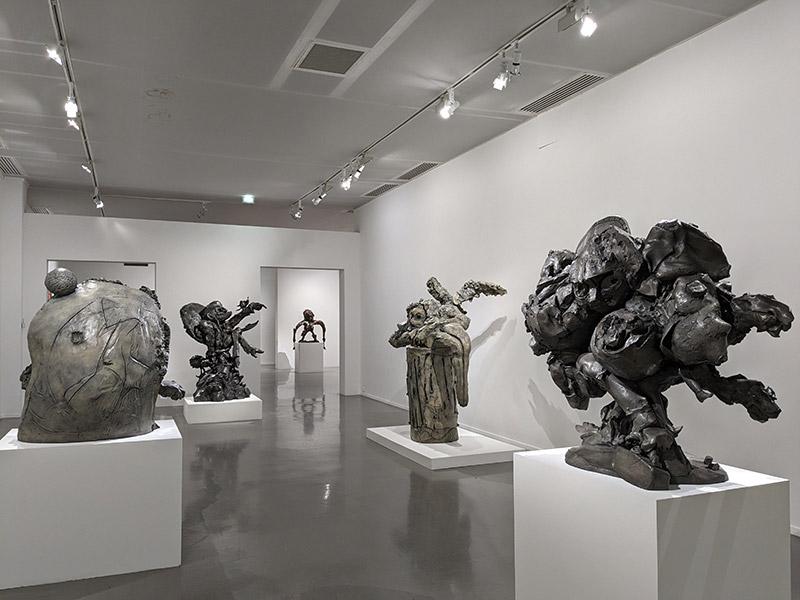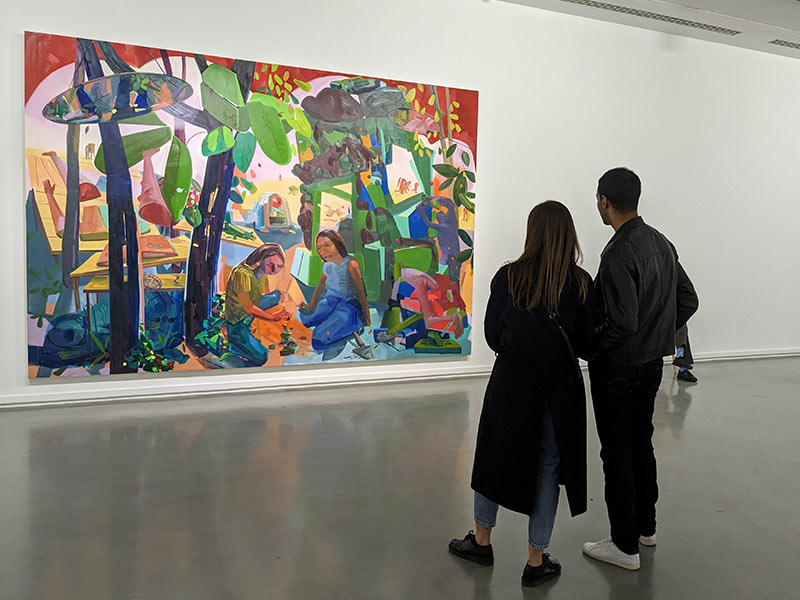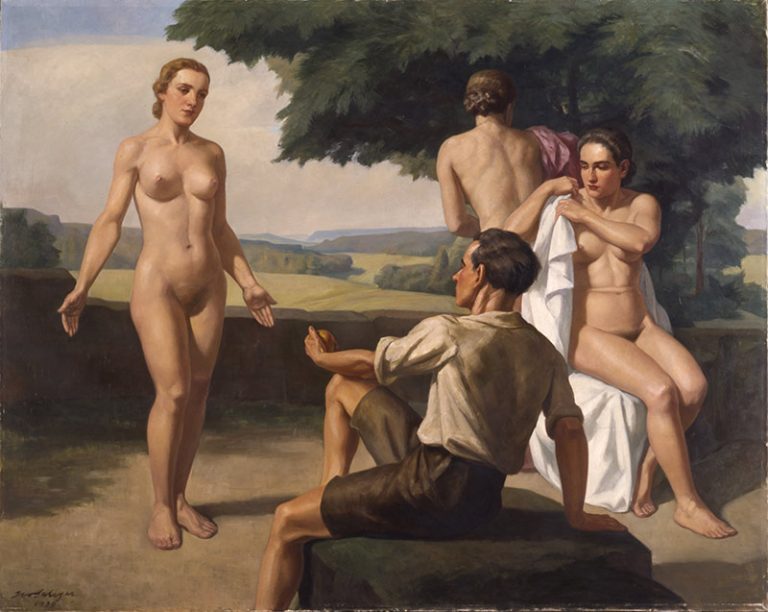Paris. The majority of museum visitors prefer the familiar to the unknown, reunions to discovery. Thus, the queue in front of the Museum of Modern Art in Paris for the exhibition of “Nicolas de Staël” – magnificent – does not slow down. Few, however, venture onto the second floor of the museum – formerly called the ARC – where the work of the last twenty years of Dana Schutz (born in 1976), an American artist hitherto ignored in France, is displayed. . Especially since it is difficult to imagine a more spectacular contrast than that which exists between these two neighboring exhibitions. Dream landscapes are replaced by nightmarish settings; nature emptied of all human presence gives way to lively and macabre interior scenes. In short, when the French artist paints, his American colleague hits.
Exhibition “Dana Schutz: The visible world” at MAM Paris.
© Photo Ludovic Sanejouand for LeJournaldesArts.fr
The viewer is greeted by a few atrociously distorted faces, with holey eyes or with a single eye devoid of any gaze (Sneeze2001; Myopic, 2004). Then he enters an immense room where, served by an impeccable hanging, large-format canvases form a universe of disturbing violence. Disturbing violence because it is rarely justified by the representation of a threat coming from the outside. In fact, how can we explain the self-cannibalism of the woman who is devouring his arm (Self Eater2003) or this pile of bodies and skulls ironically titled The Arts (2021)? Faced with these hybrid beings with mutilated bodies that resemble nothing or anyone, we remain stunned, speechless.
A “disturbing strangeness”
The bizarre appearance of her figures, the unexpected associations, could have definitively made the artist a late heir to surrealism. With one difference: surrealist works, conceived according to literary principles, sometimes employ proven recipes or use the same processes too systematically. With Schutz, there are no keys to the enigma. In her, the disturbing strangeness resists any attempt at deciphering. His world, which is reminiscent of that of Bosch but here devoid of any reference to the sacred, is a “theater of cruelty” where beings are confronted with the unbearable.
However, these characters from elsewhere seem to tell stories. The beings painted by the artist are transformed into plastic “actants”, distributed over the entire surface of the canvas, as if waiting for an improbable event. In reality, the American artist’s distressing imagery is constructed not from themes but from obsessions which have as their center the human body and the impulses which animate and undermine it. Body but also fragmented, fragmented world, including these men and women – adolescents? – helplessly witness the decomposition. Are they trying to rebuild it? The three characters with doubtful looks who, gathered around a table, handle the remains of unrecognizable objects, do not seem to believe it despite the title of the work, Reformers (2004).

Exhibition “Dana Schutz: The visible world” at MAM Paris.
© Photo Ludovic Sanejouand for LeJournaldesArts.fr
And, when Dana Schutz depicts human relationships in society, more particularly in American society, her critical outlook becomes scathing. So, with a grating humor, Men’s Retreat (2005) depicts men in suits – retired executives? – who wander blindfolded in an undergrowth, as if in a grotesque role-playing game. Elsewhere, in an indescribable crush, humanoids desperately struggle to make their way to the top of a mountain (Mountain Group, 2018). Here and there, a corpse appears, for no apparent reason.
Can we see in these representations a painting of contemporary history, as Anaël Pigeat, curator of the exhibition, suggests in the very enlightening educational panels? Or, as Fabrice Hergott, director of the premises, writes, is Schutz “an artist who is as topical as she is not current” ? In any case, she is part of a family of creators – Philip Guston, Paula Rego, Gérard Garouste – who have a rare gift: that of inventing strong and suggestive shapes and images. An indisputable sign of a great artist.







